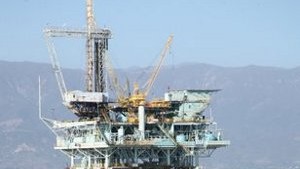The potential for a domestic disaster has been underscored by the Gulf spill. Until the BP Gulf crisis reminded the nation that these accidents can be catastrophic, oil exploration off the Northern Coastline had been under consideration by the Obama Administration. Some prudent political backpedaling quickly shelved that idea, but there is an underlying movement to drill the reserves off the Mendocino and Sonoma coast, as well as expand exploration in Santa Barbara Santa Monica and La Jolla.
Sanctuaries Expansion
Last month Representative Lynn Woolsey renewed her push to expand the marine sanctuaries and thus permanently ban offshore oil drilling off much of the North Coast. Oil drilling is expressly prohibited in marine sanctuaries, but commercial fishing is allowed. Drilling is currently banned off the coast until 2017, but sanctuary status would make that permanent.
Currently the Monterey, Gulf of the Farallones, and Cordell Bank Marine sanctuaries protect almost 8,000 square miles of ocean. The Woolsey proposal would expand the sanctuaries up to Point Arena in Mendocino County to permanently protect this important region from oil exploration.
But the head of the oil industry's most powerful trade group challenged the Obama administration's decisions last year to preclude oil and gas leases off the Atlantic and Pacific coasts and the eastern Gulf of Mexico.
A report released by the American Petroleum Institute estimates that there are 10.5 billion barrels of untapped oil reserves on the Pacific coast. It calls on Congress and the White House to “re-examine and reconsider limits” on drilling.
However, the Outer Continental Shelf off of Northern California is only estimated to hold 5% of the technically recoverable undiscovered oil reserves that are already available for leasing in the Gulf of Mexico. If all these reserves were recovered, it would only amount to about 100 days of US oil consumption.
A Major Upwelling Zone
The reason the Northern coast is so abundant with marine life is the phenomena called upwelling,
At Point Arena upwelling occurs at the edge of the Continental Shelf. Cold, nutrient rich water from the deep sea rises, creating plankton blooms which in turn feed fish, birds and whales. This nutrient rich current is carried south along the Sonoma and Marin coastlines creating an abundance of rockfish, crabs and other commercial species. Although less than 1 % of the ocean, over half of fisheries occurs in upwelling regions such as the one north of the Cordell Bank. This natural conveyor belt supports sea life and the lives of fishermen in our communities.
In 2006, commercial fishery landings in Crescent City, Eureka and Fort Bragg totaled $39.8 million dollars. Across California, commercial fishing and associated businesses accounted for almost $10 billion in sales, $5 billion in income and almost 200,000 jobs in 2006. Roughly 1.5 million recreational anglers took 4.5 million fishing trips that year, supporting over 20,000 jobs and accounting for almost $4 billion in sales and $2 billion in value-added services.
Protecting this upwelling zone form catastrophic damage will protect more than fish: it will protect jobs.
The Sanctuary Bill Will Protect Fishing
Woolsey has called for bipartisan support of the sanctuary measure, saying it would “help the economy by preserving jobs in the fishing industry and creating new ones in the tourist industry.” It will also protect the sensitive upwelling regions so vital for fish and fishermen. If the area does become a sanctuary, fishing will still be permitted. Fishing advocates like the Pacific Coast Federation of Fishermen supports the Sanctuary Expansion idea.
Protecting this source of nutrients and larvae will protect fisheries at the source. Pollution from offshore platforms, the risk of invasive species being introduced by oil rigs brought from overseas, harmful effects of seismic air guns used for exploration, and the possible catastrophic damage from an oil spill are too great of a risk to fisheries and to the nearby National Marine Sanctuaries for the minimal economic benefits of drilling.
In a similar upwelling zone south of Point Conception rows of oil derricks line the Santa Barbara Channel. Forty years after the spill, ships ply back and forth, flares burn in the night sky and a thin film covers the water. A few miles beyond, the Channel Islands break the horizon, an invisible line dividing the Sanctuary from the oil.
The Gulf can happen here. The question is will we allow it or will we act to protect our natural resources and our jobs from harm.
The Sanctuary expansion would be a legacy for our coastline, and ensure future generations the enjoyment of fish and all marine life.
37.7699 -122.467174
 You can always tell a Goleta surfer by the back smear on the deck of their board. As a kid we were used to tar balls off Carpenteria and a bottle of mineral oil and cotton balls were standard equipment for tarry soles after walks on the beach. Natural seeps have been recorded since the Conquistadores, and although the seeps might have been exacerbated by the oil rigs offshore, it was a way of life.
You can always tell a Goleta surfer by the back smear on the deck of their board. As a kid we were used to tar balls off Carpenteria and a bottle of mineral oil and cotton balls were standard equipment for tarry soles after walks on the beach. Natural seeps have been recorded since the Conquistadores, and although the seeps might have been exacerbated by the oil rigs offshore, it was a way of life. 